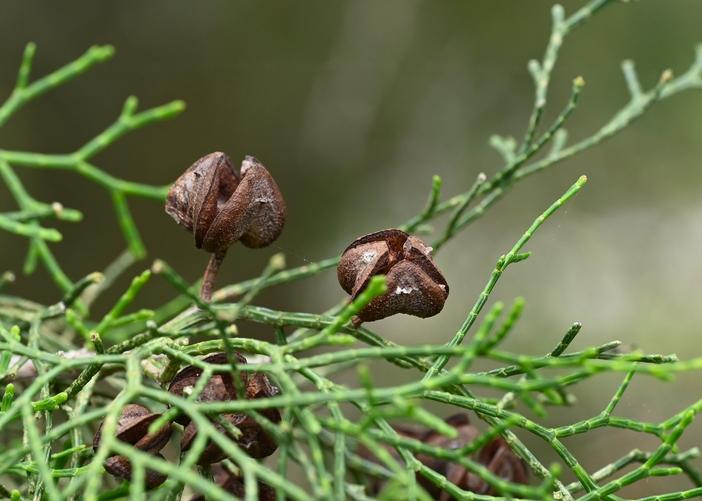Arar Tree
(Tetraclinis articulata)
Arar Tree (Tetraclinis articulata)
/
/

Krzysztof Ziarnek, Kenraiz
CC BY-SA 4.0
Image By:
Krzysztof Ziarnek, Kenraiz
Recorded By:
Copyright:
CC BY-SA 4.0
Copyright Notice:
Photo by: Krzysztof Ziarnek, Kenraiz | License Type: CC BY-SA 4.0 | License URL: https://creativecommons.org/licenses/by-sa/4.0 | Uploader: Kenraiz | Publisher: Wikipedia Commons











































Estimated Native Range
Summary
Tetraclinis articulata, commonly known as Arar Tree, is an evergreen tree native to the arid woodlands and hills of the western Mediterranean, particularly in Malta, Morocco, Algeria, and Spain. It is a small, slow-growing tree, typically reaching heights of 6–15 meters (rarely up to 20 meters) with a trunk diameter of 0.5 meters (rarely up to 1 meter). The Arar Tree often develops multiple trunks from its base, contributing to its distinctive appearance. Its foliage consists of small, scale-like leaves that form dense, dark green sprays, providing year-round color and texture. The tree is also known for its durable, fragrant wood and its ability to thrive in rocky, calcareous soils.
The Arar Tree is valued for its adaptability to hot, dry climates, making it a suitable choice for xeriscaping and Mediterranean gardens. Its ornamental qualities include its unique form and dense foliage, which can be pruned into hedges for privacy and security. Additionally, its compact size and slow growth rate make it an excellent candidate for bonsai cultivation. Gardeners should provide the Arar Tree with full sun to part shade, ensure medium water availability, and plant it in well-drained soils to mimic its native habitat conditions. While it is generally low-maintenance, it can be susceptible to root rot if overwatered or planted in poorly drained soils.CC BY-SA 4.0
The Arar Tree is valued for its adaptability to hot, dry climates, making it a suitable choice for xeriscaping and Mediterranean gardens. Its ornamental qualities include its unique form and dense foliage, which can be pruned into hedges for privacy and security. Additionally, its compact size and slow growth rate make it an excellent candidate for bonsai cultivation. Gardeners should provide the Arar Tree with full sun to part shade, ensure medium water availability, and plant it in well-drained soils to mimic its native habitat conditions. While it is generally low-maintenance, it can be susceptible to root rot if overwatered or planted in poorly drained soils.CC BY-SA 4.0
Plant Description
- Plant Type: Tree
- Height: 18-45 feet
- Width: 15-60 feet
- Growth Rate: Moderate
- Flower Color: N/A
- Flowering Season: Non-Flowering
- Leaf Retention: Evergreen
Growth Requirements
- Sun: Full Sun, Part Shade
- Water: Medium
- Drainage: Fast
Common Uses
Erosion Control, Low Maintenance
Natural Habitat
Arid woodlands and hills of the western Mediterranean
Other Names
Common Names: Sandarac , Arâr , Sandarakbaum , Sandarakzypresse , Alerce , Bois De Citre , Thuya Articulé , Thuya D’Algérie , Thuya De Barbarie , Sandaracca
Scientific Names: Tetraclinis articulata , Callitris quadrivalvis , Callitris articulata , Thuja articulata , Callitris macrostachya , Callitris triquetra , Cupressus articulata , Cupressus triquetra , Juniperus cunninghamii
GBIF Accepted Name: Tetraclinis articulata (Vahl) Mast.